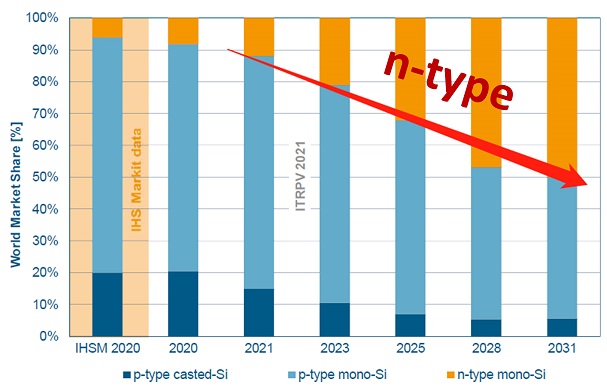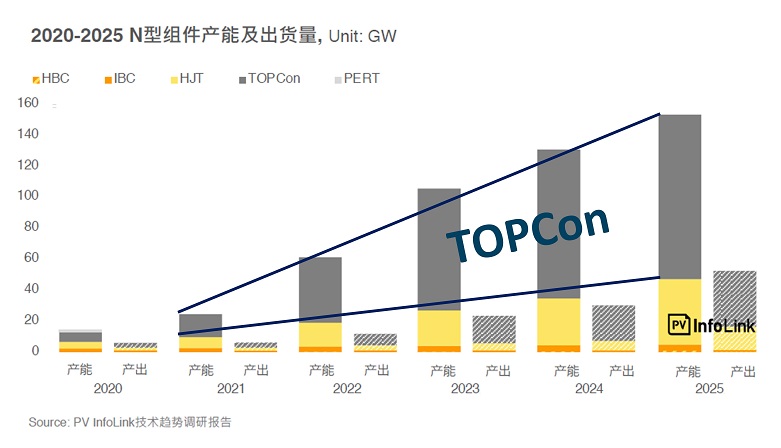In June 2021, LONGi announced that it has achieved a conversion efficiency of 25.21% on an N-type TOPCon solar panel with an area of 242.97 cm², which is certified by the German ISFH.
In August 2021, Risen Energy reported at the PV Cell Tech conference that its 158.75-sized (251.99 cm²) N-type TOPCon cell has a conversion efficiency of 24.78%.
In September 2021, Jolywood reported at the PVTD Photovoltaic Technology Weathervane Conference that its 182 size (330.15 cm²) N-type TOPCon solar module cell has a conversion efficiency of 25.4% and has been certified by the China Institute of Metrology (NIM).
In the same month, Trina Solar reported that its 210 size (440.92 cm²) TOPCon solar modules cell has a conversion efficiency of 24.54% at the "7th TOPCon Technology and PERC+ Forum".
In October 2021, Jinko reported that its 163.75-sized N-type TOPCon solar panels cell had a conversion efficiency of 25.4%, which was calibrated by the JET testing laboratory in Japan.
According to theoretical calculations, the potential efficiency (28.7%) of TOPCon solar cells is closest to the theoretical limit efficiency (29.43%) of crystalline silicon solar cells. There is still a certain distance between the maximum efficiency and potential efficiency of the current industrialized N-type double-sided TOPCon cells. The efficiency of TOPCon cells can be improved by the following ways:
1) Reduce the recombination loss and carrier transmission loss in the passivation region of the emitter;
2) Reduce the non-ideal optical loss on the back;
3) Reduce optical occlusion and reflection loss.
TOPCon's market share and future scale forecast
After the industry is fully de-subsidized, photovoltaic power generation needs to rely on its own competitiveness to directly compete with traditional energy sources, and truly realize market-oriented self-sustainable development that does not rely on subsidies. The inefficient and backward production capacity will be eliminated at an accelerated rate, while advanced photovoltaic products with "higher quality, higher efficiency and lower cost" will dominate the market.
ITRPV 2021 predicts that N-type cell technology is a technology trend in line with market development, and the market share of N-type silicon wafers will gradually increase, and it is expected to reach 50% in 2031, becoming the mainstream silicon wafer type. According to the latest forecast results of PV InfoLink 2021, among many types of N-type cells, the production capacity and shipments of TOPCon cells will exceed 50% this year, showing a trend of gradual increase, and will be dominant in N-type modules in the future. status.

